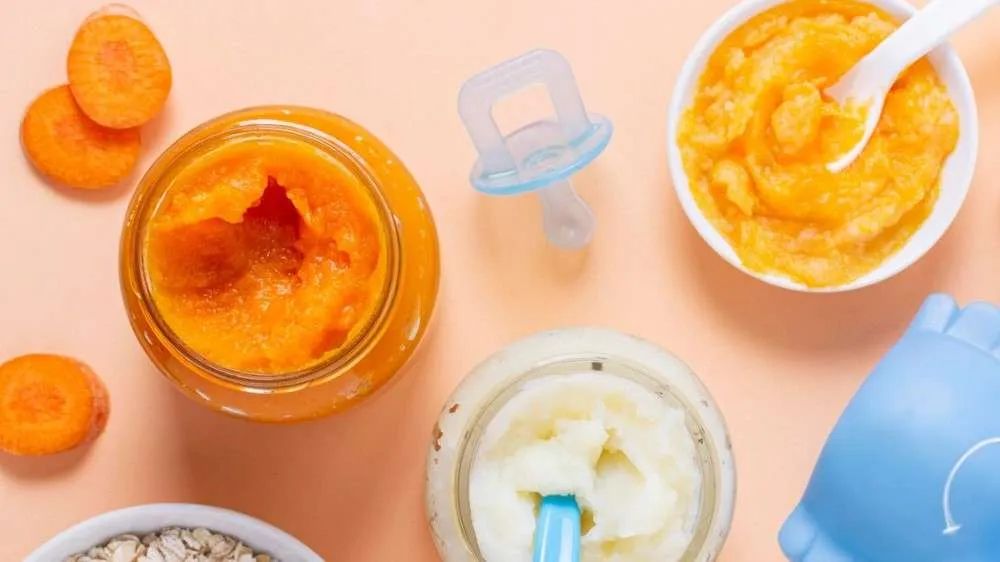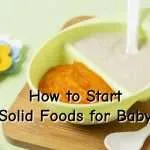Around 7 months, your baby is likely starting to get the hang of eating solids. Using the detailed 7 months baby food chart as your roadmap can help ensure your little one’s nutritional needs are met during this transitional time.
This comprehensive guide covers everything parents need to know about feeding a 7 month old, including expanding the variety and texture of foods, making homemade purees, sample meal schedules, troubleshooting common issues like food jags, understanding key nutrients, managing allergies, transitioning to finger foods, and more.
With the age appropriate feeding tips provided in this 7 months baby food chart breakdown, you’ll feel confident introducing enriching new foods while following your baby’s lead.
Key Takeaways
- Expand variety of purees – focus on iron sources like meats
- Increase food texture – start mashed and soft chopped foods
- Watch for signs baby is ready for finger foods
- Manage picky eating by offering disliked foods repeatedly
- Troubleshoot reflux, constipation, and potential allergies
- Make own purees, incorporating family foods and spices
- Trust your instincts and follow baby’s hunger cues
- Keep breastmilk or formula as primary nutrition source
Expanding Food Variety
By 7 months, your infant has likely tried some simple purees. This month you can continue expanding the variety of fruits, vegetables and proteins offered.
Some foods to introduce:
- Pear, mango, papaya, kiwi
- Peas, green beans, acorn squash
- Teething biscuits, crackers
- Chicken, turkey, tofu
- Pasta, cream of wheat
- Full fat yogurt and cheese
Focus especially on iron-containing foods like pureed meats, iron-fortified cereal, and beans. Iron supports brain development and growth. Offer a new food for 3-5 days before introducing another to watch for reactions.
Let your infant set the pace. If they lean forward and open their mouth for more, they are showing signs of enjoying and being ready for more of that food. Pulling away and keeping lips shut can signal dislike or fullness. Respond accordingly.
Increasing Texture
Around 7 months, you can begin increasing the texture of your baby’s foods from completely smooth purees to mashed and chopped textures. Signs your baby may be ready for thicker foods include:
- Chewing motions
- Grabbing food and putting to mouth
- Sitting with support
- Swallowing thicker purees without difficulty
Start by mashing or chopping soft fruits like bananas, avocados and melons. Then move to mashing and chopping cooked vegetables and meats to a small minced texture. Some 7 month olds can handle small pieces of very tender foods that dissolve easily like cheese, crackers or toast.
Introduce mashed/chopped textures gradually and watch for gagging or choking. Go slowly and remain responsive to baby’s cues as you increase food texture variety.
Transitioning to Finger Foods
Sometime between 7-9 months, many babies will become ready and eager to start feeding themselves. However the key is following your individual child’s signs of readiness. Good first finger foods around 7 months include:
- Pieces of banana, melon, pear
- Mini cheesy breadsticks
- Tender steamed vegetable pieces
- Small pieces of chicken or meat
- Baby Mum-Mum crackers
- Puffs or oat cereal
Always supervise closely as baby navigates self-feeding. Sitting upright with good head control is important. Offer bite-size pieces that baby can grab with whole palm. Avoid whole grapes, hot dogs, popcorn and other choking hazards.
Let baby explore! Self-feeding helps develop fine motor skills and autonomy. It can get messy but have fun with this taste of independence.
Managing Food Jags
Many babies go through phases of fixating on a certain food around this age. It’s called a food jag. For a week or two, they may refuse everything except say bananas or sweet potatoes. Here are tips for dealing with food jags:
- Keep offering other foods repeatedly – new foods take many exposures
- Change up the presentations, pairings, textures
- Model enjoying a variety of foods yourself
- Avoid packing meals with the favorite food – keep balanced
- Have patience. This phase will pass!
Food jags are developmentally normal as babies explore autonomy and control. Work with it and don’t stress. For picky eaters, keep exposing to new flavors.
Making Homemade Purees
Making your own baby food is a great way to control nutrition and introduce new flavors. Around 7 months you can:
- Get creative blending and freezing fruits/veggies in ice cube trays for variety
- Introduce spices like cinnamon, parsley, paprika
- Add breastmilk, formula or coconut milk for creamy texture
- Puree family foods – adjust seasonings for baby
- Serve some mashed foods with soft lumps
- Store in air-tight containers for 2-3 days, freezer for 2-3 months
Incorporate nourishing add-ins like avocado, nut butters, flaxseed, wheat germ. Tailor textures to your infant’s development. Homemade food provides flexibility, saves money, and helps baby adjust to family meal flavors.
Sample Schedule
Here is a sample daily schedule for a 7 month old:
Breakfast: Iron-fortified cereal + mashed banana
Lunch: Pureed meat, steamed/mashed veggies Dinner: Yogurt with mashed fruit, teething crackers
Snacks: Mum-mum rice biscuits, pureed sweet potatoes
Drinks: Breastmilk or formula, sips of water with meals
By 7 months, most babies are eating 2-3 “meals” per day of solids plus 1-2 snacks. Offer a variety of flavors, colors and textures. Respond to hunger/fullness cues. Keep breastmilk or formula intake to 24-32 oz per day.
Troubleshooting Common Problems
Here are some common feeding problems and how to handle them:
- Constipation – Pear, prune, peach purees. Tummy massage. Consult doctor before water.
- Reflux – Smaller feeds, keep upright 20+ mins. Talk to pediatrician.
- Gas – Limit fruit, bicycle legs, tummy massage. Burp frequently.
- Allergy – Hives, vomiting, look for trigger. Eliminate food, see doctor.
- Gagging – Normal learning process. Check size/shape of foods and go slower.
- Picky eating – Offer new foods 10+ times. Vary flavors and pairings.
- Slow weight gain – Discuss supplements or increased frequency with pediatrician.
Stay attentive as your baby tries new foods. Call your pediatrician with any concerns about nutritional deficits, allergies or feeding difficulties.
Conclusion of 7 Months Baby Food Chart
Around 7 months, you can start providing your baby with a wider variety of foods and textures according to the baby food chart, while monitoring for any issues. Offer mashed, chopped and finger foods as your infant shows readiness. Homemade baby food provides flexibility to tweak for your child. Keep exposing any picky eaters to new flavors repeatedly. Remember to let your baby set the pace and trust your instincts – you’ve got this!
Frequently Asked Questions
What new foods can I introduce at 7 months?
Great options are tender meats like chicken, tofu, cheese, pasta, chopped fruits and steamed veggies. Focus especially on iron-rich foods.
How do I know if my baby is ready for finger foods?
Signs of readiness around 6-8 months include sitting unassisted, bringing objects to mouth, chewing motions, and swallowing thicker purees easily.
What are some easy homemade purees for 7 months?
Blend or mash fruits like pears, bananas, melon, mango. Steam then puree veggies like peas, carrots, sweet potatoes. Add breastmilk or formula for smooth texture.
How many teeth do babies have at 7 months?
Most babies get their first teeth around 6-8 months. Typically the two bottom front teeth emerge first. Teething may cause increased biting, drooling and chewing at this age.
What should I do if my baby gags on thicker purees?
Gagging is normal as babies learn how to swallow chunkier mixes. Take it slow and make sure the texture isn’t too advanced. Consult your pediatrician if gagging is excessive.
How do I get more calories in my underweight 7 month old?
Discuss adding powdered formula supplement or olive oil to purees for extra calories. Also offer higher calorie foods like avocado, nut butters, yogurt, and higher fat meats.
Is my baby getting enough to eat if they want to nurse right after eating solids?
Breastmilk or formula should still make up the bulk of nutrition at this age. Nursing immediately after solids is common as babies have small stomachs. Respond to hunger cues










